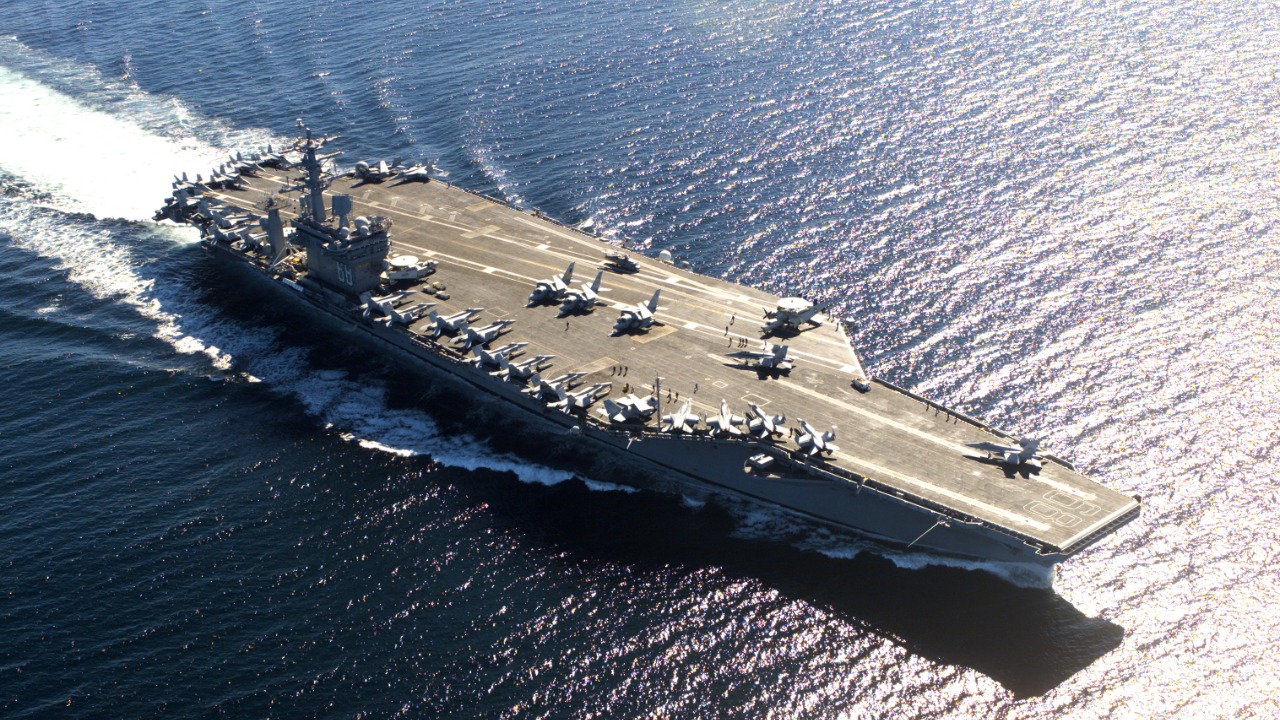
Despite their colossal size, modern aircraft carriers like the Ford Class remain a vital component of naval power, employing sophisticated methods to evade detection and ensure their survivability in contested waters. However, these maritime behemoths are not without their vulnerabilities and threats, as seen in the ongoing debates and strategic discussions surrounding their design and operation.
The Enormity of Modern Aircraft Carriers
The Ford Class carriers are a testament to human engineering, with their massive scale posing both a challenge and a necessity for concealment. These vessels displace over 100,000 tons and stretch over 1,100 feet in length, accommodating a crew of more than 4,500. The transition from the Nimitz Class to the Ford Class did not alter these core dimensions significantly, but it did introduce design enhancements to address size-related vulnerabilities. However, the debate on the scale of carriers continues, especially in light of the reported mistakes in the Ford Class design.
Stealth Technologies in Carrier Design
One of the key improvements in the Ford Class carriers is the incorporation of stealth technologies. These include radar-absorbent materials and angular deck designs that reduce radar cross-sections, making the carriers less detectable than their Nimitz predecessors. Furthermore, the Ford Class carriers employ advanced propulsion systems that minimize electromagnetic emissions, thereby reducing their detectable signature. These technological advancements are part of broader concepts of carrier survivability, enabling these massive vessels to hide in plain sight.
Operational Tactics for Evasion
Alongside stealth technologies, operational tactics play a crucial role in carrier concealment. Carrier strike group formations, for instance, use escorts like destroyers and submarines to create defensive bubbles that mask the carrier’s position. Emission control protocols also allow carriers to operate in radio silence during high-threat scenarios, further enhancing their ability to evade detection. These tactics, along with others such as speed and route unpredictability, are part of the strategies for carrier evasion.
Defensive Systems Enhancing Concealment
Defensive systems on and around the carrier also contribute to its concealment. Integrated air defense networks, including Aegis systems on accompanying ships, can intercept threats before they reveal the carrier’s position. Additionally, carriers are equipped with decoy and countermeasure systems like chaff launchers and infrared decoys to confuse incoming missiles. These layered defenses, as analyzed in the survivability of the aircraft carrier, help preserve operational secrecy.
Improvements in the Ford Class Over Legacy Designs
The Ford Class carriers boast several upgrades over the Nimitz Class. One notable improvement is the Electromagnetic Aircraft Launch System (EMALS), which reduces noise and heat signatures compared to the steam catapults used on Nimitz Class carriers. Power generation enhancements also provide more electricity for stealth features without increasing vulnerability. These advancements, as highlighted in comparative analyses, have significantly evolved the carriers’ hiding capabilities.
Vulnerabilities and Adversary Countermeasures
Despite these improvements, aircraft carriers remain vulnerable to certain threats. Hypersonic missiles, for example, pose a significant challenge to carrier concealment, as outlined in the strategies for sinking China’s new aircraft carrier. Design flaws, such as those reported in the Ford Class carriers, can also expose positions to advanced surveillance. Furthermore, satellite and drone reconnaissance present additional risks, as discussed in the survivability of the aircraft carrier.
Future Strategies for Carrier Survivability
Looking ahead, the integration of AI-driven threat detection could enable carriers to adjust hiding tactics preemptively in real-time. Evolving doctrines, as discussed in recent analyses, also suggest a shift towards distributed operations for enhanced survivability. Lessons from the advancements in the Ford Class, as noted in previous studies, will likely inform the design and operation of next-generation stealth carriers.
More from MorningOverview